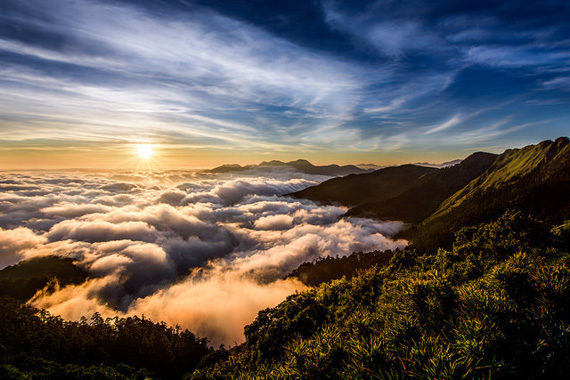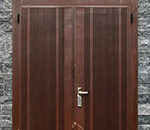Many amateur photographers (and even some professionals) rely on the built in through the lens, or TTL, metering systems provided by their cameras. In the digital age, one must pay strict attention to many factors in order to get it right using TTL exposure metering.

Photo by Pai-Shih Lee; ISO 64, f/22, 1/80 exposure.
I want to discuss four factors to consider when using your camera’s metering system. I presuppose that your camera has some level of user control. The control factors I will consider are: white balance, aperture control, time value control, and finally, metering control systems. If your camera has some or all of these controls then this article provides valuable information for getting it right the first time in the camera. By the way, getting it right the first time is important because it saves you time and effort when you process your images. You will have to do far less to rescue a missed shot and that is the entire point.
Let me say a brief word about Photoshop, or any other piece of processing software one uses. I often hear the verb photoshopped used in a negative manner. In fact, whether one uses film or digital technology, one always processes one’s images. Tools such as dodging and burning in the darkroom may be translated to using darkening or lightening brushes in Photoshop. The simple fact is that Photoshop is the tool digital photographers use to process images. It’s the modern darkroom and no one ever said negative things about darkroom manipulation. So go ahead and process you images without guilt or negativity.
White Balance
Now let me tackle the idea of white balance. Most digital cameras have an automatic white balance (AWB) feature. In most conditions, setting the camera to AWB tends to work out well but never perfectly. The AWB guesses at the color temperature of the light, translating that value to an overall average that tends to be okay for most conditions. More precise white balance, however, is always the goal. White balance amounts to nothing more than measuring the color temperature of the light source illuminating the image to be shot. Light at sunrise and sunset is warmer than light at mid-day. Light in shade is cooler than direct sun. Tungsten light is warm while florescent light casts a greenish hue. So what’s one to do? Well, many cameras have preset choices for white balance that are more precise than the AWB catchall setting. A sun icon represents bright sunlight while an incandescent light bulb icon represents tungsten light. A tubular icon setting generally compensates for florescent lighting.

Photo by Leszek Leszczynski; ISO 800, f/8, 1/400 exposure.
The point of all this is to take the time to select the most appropriate white balance available and go with that setting. Of course, you could spend up to $1000 for a good color meter and set the Kelvin temperature manually but unless you are photographing for Vogue, that is probably not a good investment. I will address other ways to manually set white balance in the near future using white and gray cards both for pre-shot and post-processing settings in another article.
Aperture and Shutter Speed
Many digital cameras provide the ability for you to shoot fully automatically or fully manually or by controlling either aperture or shutter speed as variables. In fact, I often use the TTL metering system while holding the aperture fixed at its fastest setting—wide open—in order to blur the background. Learning to use shutter and aperture for creative effects can save time in post-processing. I often shoot landscape images using High Dynamic Range (HDR) techniques. I want to control depth of field so I use the Av or fixed aperture setting allowing the TTL metering system to shoot bracketed images with shutter speed as the variable. My best workshop advice is always to experiment with the aperture and shutter speed controls to see what they can do for you.
Metering Systems
Finally, let’s explore the metering system in your camera. All cameras provide some kind of overall average or evaluative metering system for the point and shoot modality. The more sophisticated cameras provide narrower metering choices as well. I often shoot using a spot meter function in my TTL metering system. If I am shooting a portrait outdoors, for example, I want to make absolutely certain that the subject’s face is well exposed while being far less concerned with the background. Metering with the spot meter setting—in my camera, a Canon, the spot meter is represented by a small solid dot—and focusing the meter reading of the subject’s face, I can be generally assured that the face will be within the range of a normal exposure, The background will be either a bit over or under exposed but that is quite okay so long as I get the important exposure right the first time.

Photo by Flickr user barnyz; ISO 200, f/11, 1/160 exposure.
Of course, all of this takes time. Finding the appropriate white balance, adjusting the aperture and/or shutter, and deciding appropriate metering techniques. However, it saves you significant time in the long run. The few minutes you spend making appropriate decisions before you shoot may save you hours of processing time later.
About the Author:
Roger Passman is an award winning professional photographer located in Northern Illinois (rogerpassmanphotography dot net). He often leads creative photo workshops designed for beginning through intermediate amateur photographers.
Like This Article?
Don't Miss The Next One!
Join over 100,000 photographers of all experience levels who receive our free photography tips and articles to stay current:






This article says ‘let’s explore’ but never does so. A few short statements do not explain the complexities to a beginner. A more experienced photographer would understand the writer’s language, but what would a beginner think TTL means, for example.
What he says makes absolute sense, but ‘preaches to the converted’. I wonder how many novices persevered and read the article to the end.
I teach a group of photographers and have long since learned to explain why, what,where and how in order for them to grasp what is meant – without jargonese.
Yes, it all makes sense. Getting it right in the camera saves so much work in post-processing. I’m still struggling to understand how the light affect my metering and how my camera will react to it. It’s a skill to master in order to be able to make consistently good images. I’ll keep trying!
Terrific article from Mr Passman. After 40 plus years of film photography the tendency to get it right the first time was built into my digital photography way of thinking and most of my time was spent figuring out what the different metering and white balance settings could do to help me arrive at my ultimate goal. Thanks for the article.